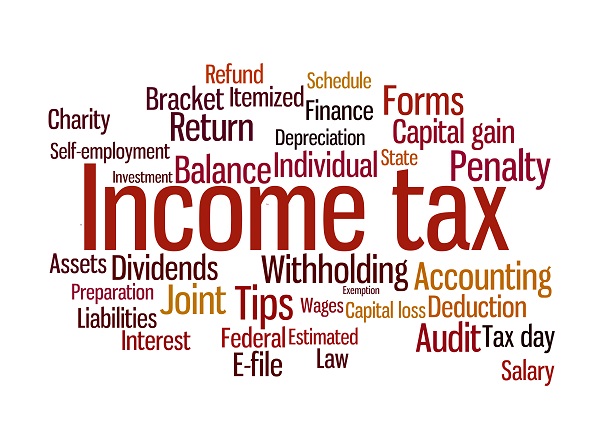Relief under Section 89 of Income Tax Act

When taxpayers receive any part of their salary in advance or in arrears, they can claim relief under Section 89 of Income Tax Act. This provision is also applicable for family pensions received in arrears.
This blog dissects Section 89 and its workings. Read on!
What is Relief under Section 89 of the IT Act?
If an employee receives arrears or pending compensation along with their salary, they are usually charged more tax than they are supposed to pay. If the employee received the amount in the year that it pertained to, the additional tax would have been divided over the years, which would have decreased the tax liability significantly. However, this is not always the case.
Fortunately, taxpayers can claim relief on the salaries they receive in the form of arrears or as advance under Section 89. This section comes under Chapter VIII (Rebates and Reliefs) of the Income Tax Act, 1961.
A person can claim relief under section 89 if he/she receives an arrear of salary in the cases mentioned below:
- Gratuity
- Salary received in arrear or in advance
- Commutation of pension
- Remuneration received during the termination of employment
Eligible Relief under Section 89
The following situations qualify for relief under section 89 as per the Income Tax Department:
- Compensation due to employment termination
- Receiving salary in arrears or in advance
- Gratuity
- When a pension is commuted
Also Read
Calculation of Relief under Section 89
Step 1
Compute the present year’s tax due by adding the arrears in total income
Step 2
Next, compute the current year’s tax by subtracting the arrears from the total amount
Step 3
Calculate the difference between the amounts of Step 2 and Step 1 (let M denote the difference)
Step 4
Compute tax liability for the year generating the arrears by adding the arrears in total income
Step 5
Now, compute tax liability for the year generating the arrears by subtracting the arrears from total income
Step 6
Calculate the difference between the two amounts in Step 5 and Step 4 (let N denote the difference)
Step 7
Subtract N from M to get the amount of relief under Section 89 of the Income Tax Act
Example of Relief Calculation
The following illustration will give you a better understanding of this provision:
Suppose. Ritu’s income was Rs. 10,00,000 in FY 2020-21. She gets an arrear amounting to Rs. 1,00,000 per annum. Her income in FY2019-20 was Rs. 7,00,000.
The chart below shows the calculation of relief under section 89:
| Details | Taxation for FY 2020-21 | Taxation for FY 2019-20 | ||
| Income including arrears | Income without arrears | Income including arrears | Income without arrears | |
| Income | 11,00,000 | 10,00,000 | 8,00,000 | 7,00,000 |
| Tax (after relief of Section 87A) | 1,42,500 | 1,12,500 | 72,500 | 52,500 |
| Cess | 5,700 | 4,500 | 2,900 | 2,100 |
| Tax Liability | 1,48,200 | 1,17,000 | 75,400 | 54,600 |
| Difference | 1,48,200 – 1,17,000 = 31,200 | 75,400 – 54,600 = 20,800 | ||
| Relief Amount | 31,200 – 20,800 = 10,400 | |||
| Tax Payable | 1,48,200 – 10,400 = 137,800 |
It can be seen from the above table that Ritu receives a relief amount of Rs. 10,400 in FY 2020-21.
How to Claim Relief under Section 89 of the Income Tax Act, 1961?
In order to claim relief under section 89 of the Income Tax Act, 1961, you must fill up form 10E online on the Income Tax website. Form 10E must be submitted before filing the Income Tax return. For this process, your salary slip will work as proof of receiving the arrear. Preserving the salary slip is important if you wish to claim tax relief on the arrear received.
Steps to File Form 10E
Here are the steps that you can follow to file form 10E to claim relief under section 89 of the Income Tax Act, 1961:
Step 1: Log in to the Income Tax e-Filing website and provide your User ID and password.
Step 2: After you successfully log in, click on the “e-File” tab and a drop-down menu will open. Click on “Income Tax Forms”.
Step 3: The screen will display Income Tax Forms; in the “Form Name” option, a drop-down menu will open. Select “FORM NO. 10E- form for relief u/s 89”.
Step 4: Select the “Assessment Year” for which you are filing the relief for, and in “Submission Mode”, select “Prepare and Submit Online”.
Step 5: After clicking on “Continue”, a new page will open for FORM NO. 10E. You will have to fill up the form by entering relevant information and completing the blue tabs.
Step 6: Click on “Save Draft” while filling up the form, and click on “Preview & Submit” after completing.
Also Read
Relevance of Form 10E Under Section 89
The Income Tax Department has made it mandatory for taxpayers to fill out form 10E to get relief under section 89. If the taxpayer is a government employee, cooperative society, institution, local authority, university or association, they are entitled to get relief under section 89.
According to section 89, tax relief is provided by recalculating the tax for both the years – one in which the arrear is received and one to which it pertains. The taxes are calculated assuming the arrear is received in the year it was due.
What Happens if Form 10E is not Filed?
Individuals who claim tax relief on arrear received while filing their income tax return but do not file Form 10E will receive a notice from the department informing the same. Further, his/her arrear amount will be included in the current year’s income and will be taxed accordingly.
Gratuity Payment as per Section 89 of the Income Tax Act
Tax relief under section 89 is applicable when a taxpayer receives gratuity for previous services (for a tenure of 5 years or above). You can calculate the tax relief in the following manner:
For a service period of 15 years or above
- Compute tax liability on income and add the gratuity during the year of taxation of gratuity
- Compute the average tax rate (Tax ÷ Total Income x 100%)
- An assessee can compute tax on gratuity based on the average tax rate
- Tax liability is computed by addition of one-third of gratuity to total income in each of the previous three years
- Next, compute the average tax rate for each year
- Measure the average of three average tax rates calculated in Step 5
- Now, calculate tax on gratuity at the rate computed in Step 6
- The excess of tax liability on gratuity calculated at Step 2 over Step 7 is the relief amount available.
For a service period of 5 years or above but below 15 years
The procedure of calculating relief on gratuity is similar to the above-mentioned method. However, you should consider two years instead of three while computing the average tax rate. The total income of the previous two years is added to one-half of the gratuity.
Factors to Consider before Claiming Relief on Arrears
Here are 5 things that you should keep in mind before claiming relief on arrears:
- Form 10E must be filed before you claim relief on arrear. If relief is claimed, but the form is not filed before that, the Income Tax Department will send a notice for non-compliance.
- You must remember that, unlike a salary, arrears are announced from a back date. This is why it cannot be taxed when it is due.
- When you are filling out form 10E, it must be kept in mind that the assessment year is the one in which you receive the arrear. For example, if you receive the arrear in the financial year 2021-22, the assessment year will be 2022-23.
- It must be kept in mind that your employer might ask for a confirmation from you regarding the submission of form 10E. However, there is no compulsion to submit it to the employer.
- Though you do not need to attach your copy of form 10E while filing your tax return, keeping it handy and safe is a good practice.
Compensation Due to Employment Termination
Section 89 of the Income Tax Act offers a relief when an individual receives taxable compensation from a previous employer or current employer during employment termination. However, the following conditions apply:
- A taxpayer gets compensation after regular service of 3 years or more
- Unexpired part of employment tenure is 3 years or above
In this case, the method of calculating relief will be similar to the one used for gratuity payments (the procedure mentioned for a service tenure of 15 years or above will be followed).
Relief for Other Cases
When a taxpayer’s pension is commuted, the calculation for relief amount will be based on the method used for gratuity (procedure specified in case of service tenure of 15 years or above).
If the payments come under some other case, CBDT (Central Board of Direct Taxes) will look through the conditions under each case and offer tax relief as applicable.
Also Read
Final Word
An Indian citizen has to pay tax on income earned during a fiscal year. Incomes often include arrears (previous dues received in the present year) and advances. Section 89 of the Income Tax Act reduces the tax burden by providing relief in such exceptional cases.
You can read the relevant provisions of the IT Act before filing income tax returns.
FAQs
Ans: Taxpayers who wish to avail relief under section 89 must file Form 10E. An assessee who is a body, association, university, institution, cooperative society, local authority or government employee can claim tax relief under this section. Any other employee can apply for the relief under the assessing officer (not an employer).
Ans: To file Form 10E, follow the below-mentioned steps:
> Go to the Income Tax online portal and log in
> Press’ e-File’ and select the relevant option from the drop-down button
> Select ‘Form 10E’ from the drop-down button
> Enter the assessment year and click’ Continue.’
> You can now provide the required details in the form
> Press ‘Submit’ after finishing the procedure
Ans: If a taxpayer cannot fill the complete form in one go, he/she can save the details duly filled up by pressing ‘Save Draft’. The assessee can access the saved draft of Form 10E later and can complete the remaining procedure thereafter.
Ans: Employers can ask for proof of Form 10E submission to adjust taxes and offer relief. However, it is not compulsory to submit the form to employers. A taxpayer need not attach Form 10E while filing IT returns.
Ans: The following categories need to pay taxes:
• Individuals
• Association of persons
• Hindu Undivided Family
• Body of individuals
• Companies
• Firms
In addition, the Income Tax Department classifies Indian residents under these age groups:
• Taxpayers aged below 60 years
• Individuals aged above 60 years – below 80 years
• Taxpayers above 80 years
Disclaimer
This article is solely for educational purposes. Navi doesn't take any responsibility for the information or claims made in the blog.
Read More on Income Tax Act

What is Form 26QB for TDS? How to Download and Submit it?
While purchasing a property, buyers are liable to pay various taxes. The Finance Act, 2013 made TDS... Read More »PF Withdrawal Rules 2023 – Rules, Documents Required and Types
EPF/PF Withdrawal Employees’ Provident Fund (abbreviated as EPF) is a popular retirement sav... Read More »Stamp Duty and Property Registration Charges in Delhi 2023
It is compulsory for property buyers in the Capital to pay stamp duty in Delhi during property regi... Read More »Income Tax Return – Documents, Forms and How to File ITR Online AY 2023-24
In India, it is mandatory for all taxpayers who earn more than the basic tax exemption limit to fil... Read More »What is Section 80CCD – Deductions for National Pension Scheme and Atal Pension Yojana
The Income Tax Act provides a number of deductions and tax benefits to taxpayers, so they can strat... Read More »Tax on Dividend Income: Sources, Tax Rate and TDS on dividend income
What are Dividends? Companies may raise funds for running their operations by selling equity. Th... Read More »Section 112A of Income Tax Act: Taxation on Long-Term Capital Gains
What is Section 112A? Section 112A of the Income Tax Act was announced in Budget 2018 to replace... Read More »Section 206AB of Income Tax Act: Eligibility And TDS Rate
Section 206AB was introduced in the Finance Bill 2021 as a new provision pertaining to higher deduc... Read More »What is a Credit Note in GST – Example, Format and Steps
A GST Credit Note is mandatory for any GST-registered supplier of goods or services. As a supplier,... Read More »Exemptions and Deductions Under Section 10 of Income Tax Act
What Is Section 10 of the Income Tax Act? Section 10 of the Income Tax Act, 1961 provides tax-sa... Read More »Section 57 of the Income-tax Act – Income from Other Sources
It is quite likely that many entities - individuals as well as businesses - have multiple sources o... Read More »What is Dearness Allowance? – Types, Calculation, and Current Rate
What is Dearness Allowance? Dearness Allowance Meaning - Dearness Allowance (DA) is an allowance... Read More »Top 10 Chit Fund Schemes in India in 2023
Chit funds are one of the most popular return-generating saving schemes in India. It is a financial... Read More »10 Best Gold ETFs in India to Invest in April 2023
Gold ETFs or Gold Exchange Traded Funds are passively managed funds that track the price of physica... Read More »10 Best Demat Accounts in India for Beginners in 2023
Creation of Demat accounts revolutionised the way trades were conducted at the stock exchanges. It... Read More »20 Best Index Funds to Invest in India in April 2023
What is an Index Fund? An index fund is a type of mutual fund or exchange-traded fund (ETF) that... Read More »Best Arbitrage Mutual Funds to Invest in India in April 2023
Arbitrage funds are hybrid mutual fund schemes that aim to make low-risk profits by buying and sell... Read More »10 Best SIP Plans in India to Invest in April 2023
What is SIP? SIP or Systematic Investment Plan is a method of investing a fixed amount in ... Read More »10 Best Corporate Bond Funds in India to Invest in April 2023
Corporate bond funds are debt funds that invest at least 80% of the investment corpus in companies ... Read More »10 Best Bank for Savings Account in India [Highest Interest Rate 2023]
Savings account is a type of financial instrument offered by several banks. It lets you safely depo... Read More »




































